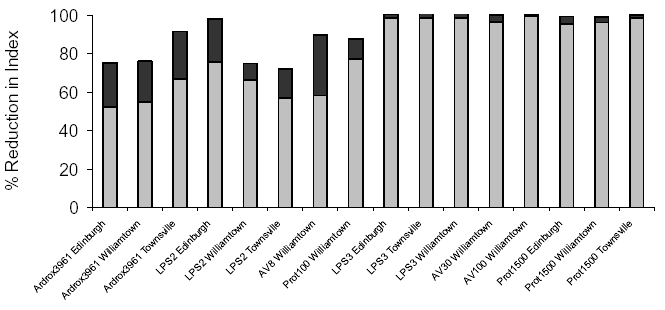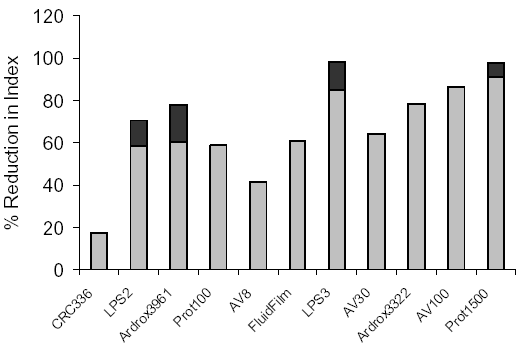
 |
Australian Defence Force Bases
Data obtained to date are shown in Figure VI. The percentage reduction in the CLIMAT Index was calculated for each product. This parameter was chosen because different products were exposed at different times, and it allows comparison with the untreated CLIMAT specimen at the time of exposure. The data show the spread of results for 2 or 3 replicate tests. The scatter was particularly large for the oily soft film products, however it is clear that the performance of individual products at each of the three ADF Bases was generally very similar. The WDSF CPCs reduced the Index from 50 to 90% depending on product type and location. At all locations the NWDSF LPS-3 and the NWDHF products CRC Protector 1500 and DINOL AV 30 reduced the Index by around 90-100 %. (reference)

Figure VI. The effects of CPCs on the corrosion of CLIMAT specimens exposed outdoors at various ADF Bases in Australia
Onboard Ship
The percentage reduction in the CLIMAT Index was also used to assess the performance of products under the maritime conditions on board a RAN frigate. The results for several products tested to date are shown in Figure VII. The dark bands in the figure show the spread of 2 or 3 replicate results. Of the oily based WDSF products, CRC Protector 100, Ardrox 3961 and LPS-2 provided the best protection in reducing the Index by around 60 %. The NWDSF and NWDHF CPCs LPS-3 and CRC Protector 1500 reduced the Index by around 85-100 %. These are significant results given the very aggressive nature of the environment and the long exposure periods.

Figure VII. The effects of CPCs on the corrosion of CLIMAT specimens exposed outdoors on a RAN ship